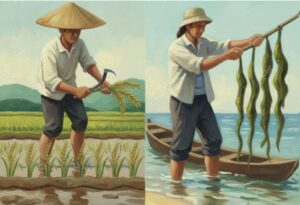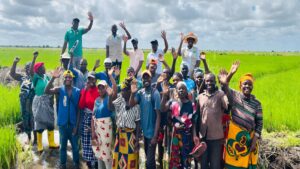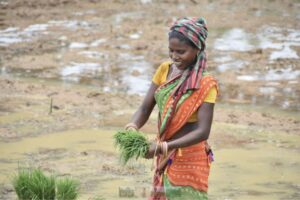The first person-to-person contact between the International Rice Research Institute (IRRI) and China occurred in 1974. On that occasion, IRRI Director General Nyle Brady joined a delegation of plant scientists for a 1-month tour during which he provided China with seeds of IRRI-developed rice varieties. In March and April 1976, a team of eight Chinese agricultural scientists visited IRRI twice. With the success of these visits, the Chinese government invited an IRRI team to China in July 1976. However, Chinese Chairman Mao Zedong’s illness—which resulted in his death on 9 September—forced the trip’s postponement until October.
The seven of us who made the journey (see map, page 26) represented a good mix of nationalities and disciplines: Nyle Brady (director general, United States), Mano D. Pathak (entomologist, India), Shu Huang Ou (plant pathologist, China), Shouichi Yoshida (plant physiologist, Japan), Gurdev Khush (plant breeder, India), Surajit K. De Datta (agronomist, India), and I (economist, United States).
Beijing, 7-12 October
We took the train from Hong Kong to Guangzhou (Canton) on 7 October, changing trains at the Chinese border before flying to Beijing. Unbeknownst to us at the time, the infamous Gang of Four had been arrested in a coup d’état on 6 October. The Gang of Four was a leftist political faction composed of four Chinese Communist party officials, including Mao’s wife, Jiang Qing. The other members were Zhang Chunqiao, Yao Wenyuan, and Wang Hongwen. They were charged with a series of treasonous “counter- revolutionary” crimes. What we witnessed, however, in the meetings, the entertainment, the confessions on the wall, even the drab gray-blue look-alike clothes that people wore, was still a part of the soon-to-end Cultural Revolution (1966-76).
 The route that we followed in China was the same as that assigned to professionals and tourists alike—Beijing, Nanjing, Shanghai, and Guangzhou. Our visit was a combination of professional activities, meetings, and sightseeing. We visited research institutions and communes, were briefed by staff at the National Academy of Agriculture and Forestry Science, and held discussions with agricultural scientists.
The route that we followed in China was the same as that assigned to professionals and tourists alike—Beijing, Nanjing, Shanghai, and Guangzhou. Our visit was a combination of professional activities, meetings, and sightseeing. We visited research institutions and communes, were briefed by staff at the National Academy of Agriculture and Forestry Science, and held discussions with agricultural scientists.
________________________________________________________________________________










